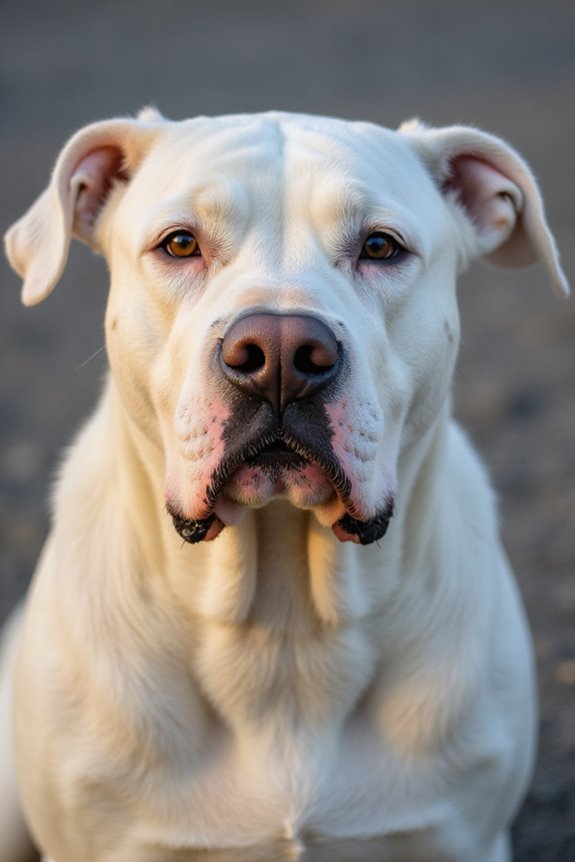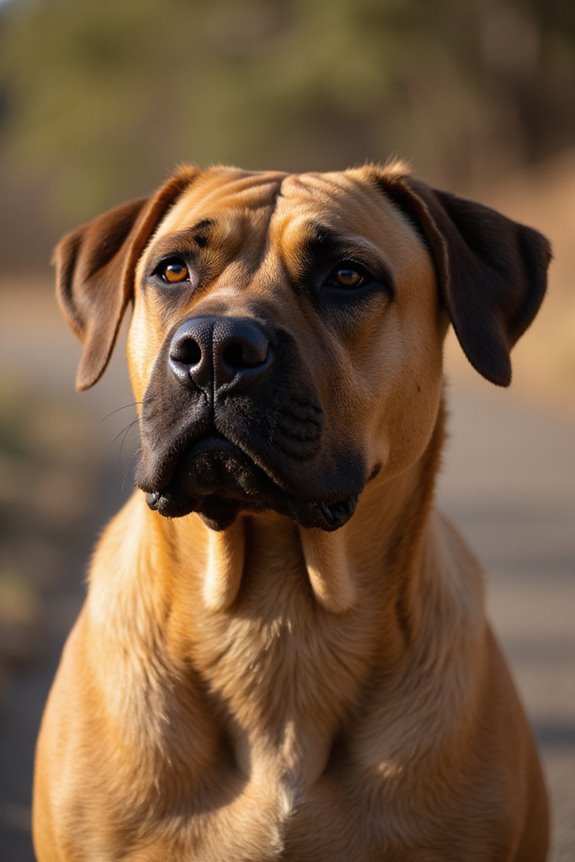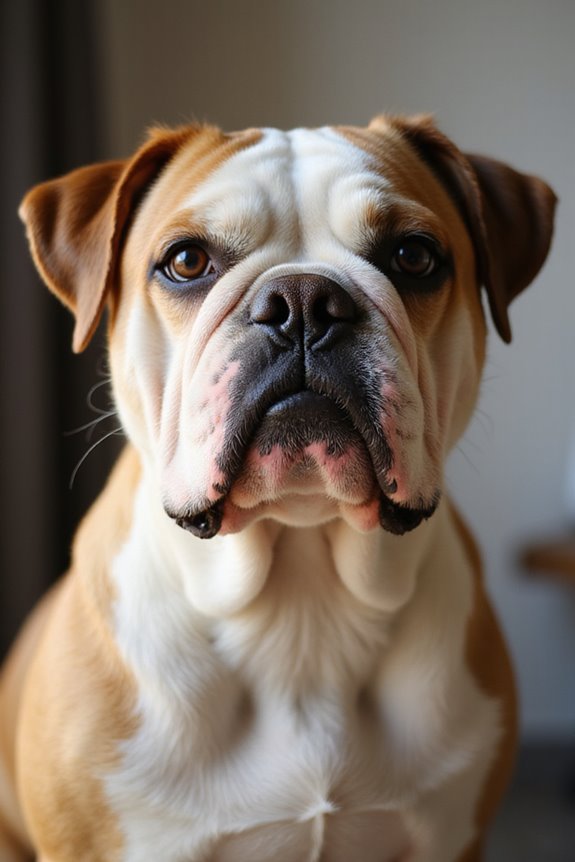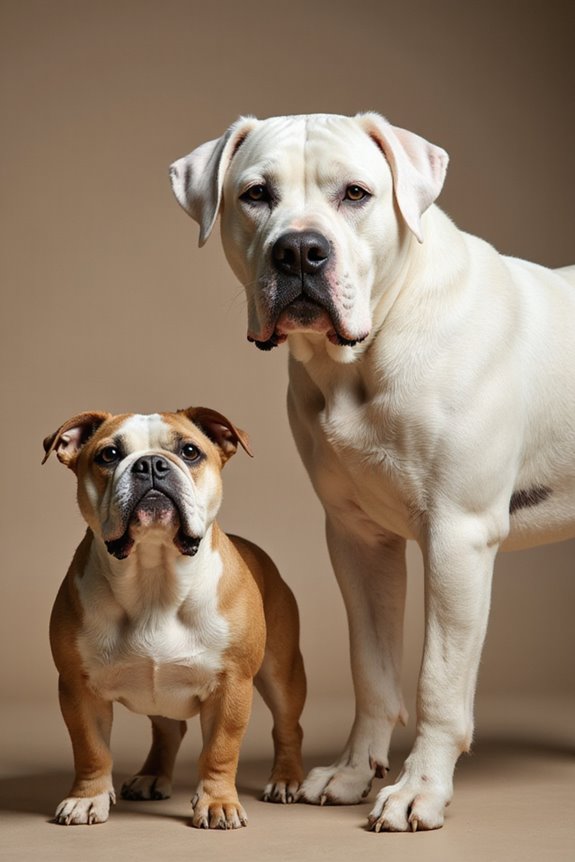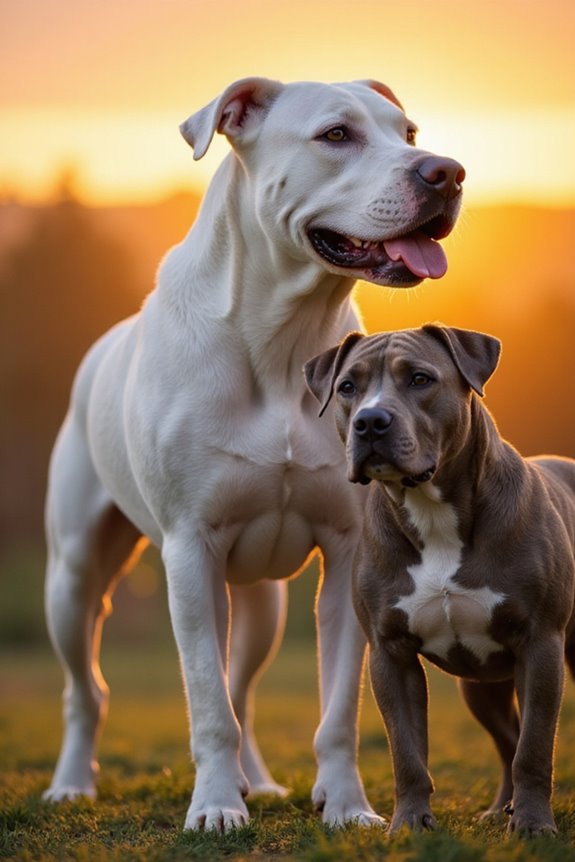The Dogo Argentino and Chilean Dogo are both remarkable South American breeds, each with unique origins and traits. The Dogo Argentino, developed by Dr. Antonio Nores Martinez in the 1920s, excels in large game hunting with its muscular build and specialized techniques. In contrast, the Chilean Dogo serves primarily as a protector and herder, featuring a more compact frame. Understanding their physical characteristics, temperaments, and working capabilities can guide potential owners in making informed decisions. More insights await you ahead.
Key Takeaways
- The Dogo Argentino was specifically bred for hunting large game, while the Chilean Dogo evolved for protection and herding purposes.
- Dogo Argentinos are typically larger, standing 24 to 27 inches tall and weighing 80 to 100 pounds, whereas Chilean Dogos are slightly smaller and more compact.
- The Dogo Argentino boasts a short white coat, often with a black spot, while the Chilean Dogo has a denser coat and various color patterns.
- Both breeds are loyal and protective, but Dogo Argentinos require confident leadership, while Chilean Dogos need early socialization to manage stubbornness.
- Health issues like joint problems and obesity affect both breeds, with Dogo Argentinos averaging a lifespan of 11 to 13 years.
Origins and History
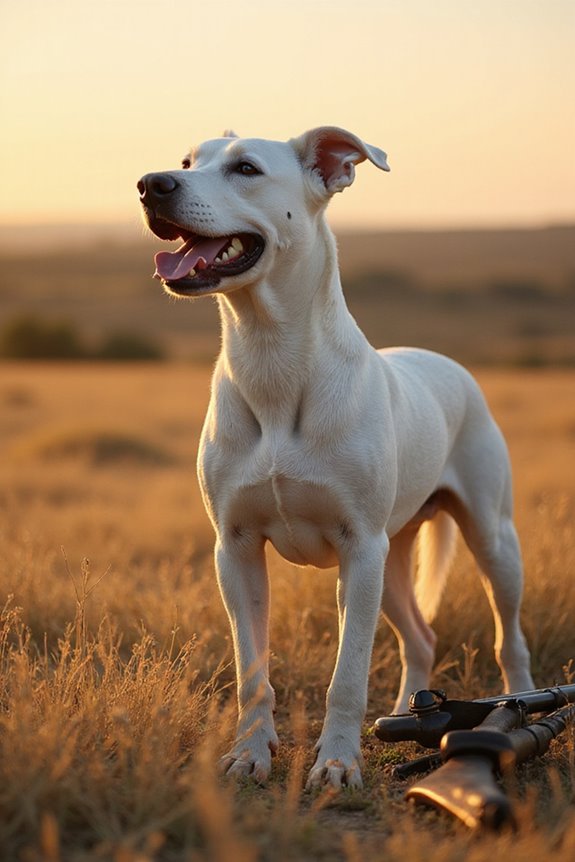
The origins and history of the Dogo Argentino and Chilean Dogo illustrate two distinct paths in canine development, each influenced by regional needs and cultural practices. The Dogo Argentino was developed in Córdoba, Argentina, beginning in the late 1920s by Dr. Antonio Nores Martinez. His methodical breeding techniques combined several breeds to create a formidable hunting dog, emphasizing strength and endurance.
In contrast, the Chilean Dogo evolved organically, primarily for protection and herding. While the Dogo Argentino’s historical importance lies in its deliberate breeding for large game, the Chilean Dogo reflects traditional rural usages. Both breeds showcase their unique historical contexts, with the Dogo Argentino being considerably more documented in its creation process, whereas the Chilean Dogo’s recognition remains less formalized.
Physical Characteristics
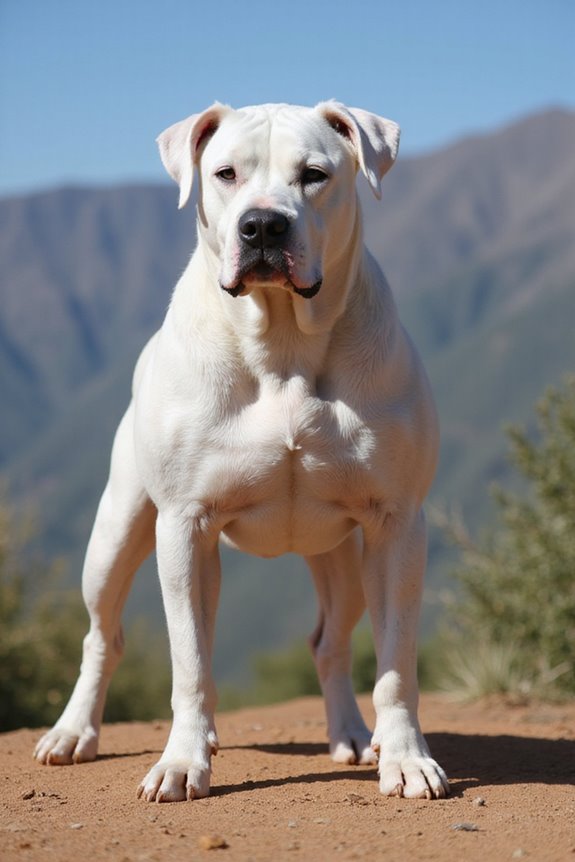
When considering the physical characteristics of the Dogo Argentino and the Chilean Dogo, one can observe significant differences that reflect their respective purposes and breeding histories.
- Size Comparison: The Dogo Argentino typically stands 24 to 27 inches tall and weighs 80 to 100 pounds, showcasing a muscular and athletic build. In contrast, the Chilean Dogo is slightly smaller, with a more compact frame suited for agility.
- Coat Differences: The Dogo Argentino sports a short, smooth, and entirely white coat, occasionally featuring a small black spot on the head. The Chilean Dogo, however, can have various colors and a denser coat, adapting better to different climates.
Both breeds display unique physical traits that underline their distinct roles in hunting and companionship.
Temperament and Behavior

Understanding the temperament and behavior of both the Dogo Argentino and the Chilean Dogo is essential for potential owners, as these breeds display distinctive traits shaped by their breeding histories and purposes.
Temperament Differences:
- The Dogo Argentino is highly intelligent, energetic, and protective, exhibiting dominant traits that require confident leadership.
- In contrast, the Chilean Dogo is calm, but can be stubborn, necessitating early socialization to prevent aggression.
Behavior Similarities:
- Both breeds are loyal and protective of their families, often serving as excellent guard dogs.
- They require consistent, positive training to manage their strong instincts and guarantee balanced behavior.
Hunting and Working Capabilities
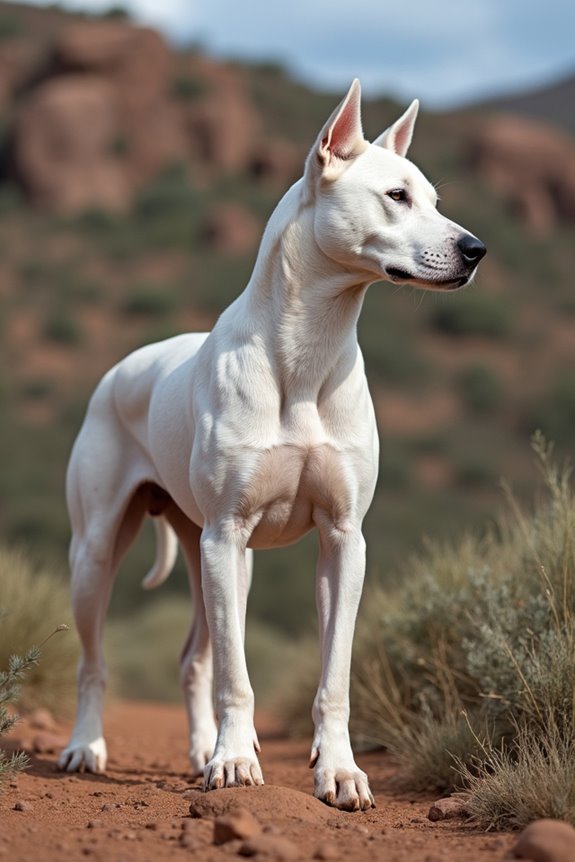
While both the Dogo Argentino and the Chilean Dogo have strong working capabilities, their approaches to hunting and various job roles reflect distinct backgrounds and purposes. The Dogo Argentino is renowned for its specialized hunting techniques, particularly in pursuing large game like wild boar and pumas. This breed acts as a catch dog, utilizing energy efficiently during hunts, quickly subduing prey rather than engaging in prolonged chases.
In contrast, although the Chilean Dogo possesses similar strength, its prey specialization tends toward guarding and protective tasks rather than hunting specific large wildlife. The Dogo Argentino’s muscular build, agility, and stamina give it a clear advantage in various hunting scenarios, optimizing performance across challenging terrains.
Health and Lifespan
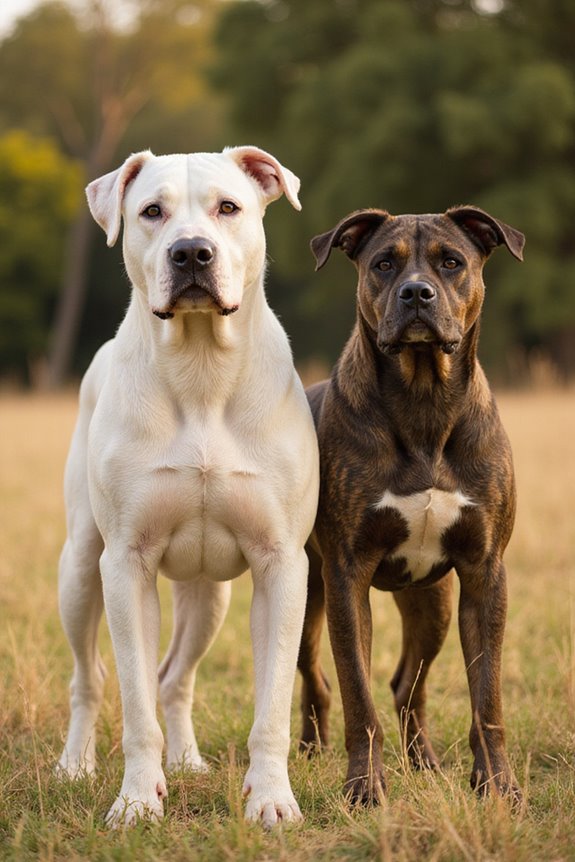
Health and lifespan are crucial considerations when evaluating the Dogo Argentino and the Chilean Dogo, given the unique challenges both breeds may face. The average lifespan of a Dogo Argentino ranges from 9 to 15 years, commonly falling between 11 and 13 years. In contrast, specific data for the Chilean Dogo remains elusive, but large working breeds typically live around 10 to 15 years. Lifespan factors like genetics, nutrition, and health management play essential roles. Both breeds are prone to common large-breed health issues, including joint problems and obesity. Regular veterinary check-ups, dental care, and proper weight management are vital for peak health. Additionally, consider genetic testing to address hereditary risks associated with these majestic dogs.
Popularity and Ownership Considerations
When considering the Dogo Argentino and the Chilean Dogo, their popularity and ownership implications are significant aspects to evaluate. The Dogo Argentino has a dedicated following, ranking 52nd in popularity, largely due to its distinct appearance and hunting history. In contrast, the Chilean Dogo remains obscure globally, facing fewer breed restrictions.
However, potential owners of the Dogo Argentino must be aware of legal regulations, as ownership is often restricted in various regions due to concerns over aggression. Both breeds require committed owners who understand their needs. Importantly, researching local laws and ensuring compliance with breed-specific legislation is necessary to fulfill owner responsibilities, allowing for successful integration into family settings.
Comparison of Training and Exercise Needs
Understanding the training and exercise needs of both Dogo Argentino and Chilean Dogo is essential for potential owners seeking to provide adequate care.
Training Techniques
- Dogo Argentino: Focuses on broad exposure for socialization and obedience. Early, consistent training sessions develop trust and reliable behavior.
- Chilean Dogo: May share similar training philosophies but can vary based on individual temperament.
Exercise Routines
- Both breeds require:
- Regular, vigorous exercise to maintain health.
- Activities like running and strength-building for Dogo Argentino.
- Considerations:
- Exercise intensity must consider age and health to prevent overexertion.
- Adequate physical engagement helps mitigate behavioral issues stemming from pent-up energy.
Both breeds benefit from a rigorous commitment to training and exercise to nurture a well-adjusted companion.
Frequently Asked Questions
How Do Dogo Argentinos and Chilean Dogos Interact With Children?
When I think about how these dogs interact with kids, it’s like a dance. Their playful temperament brings joy, while protective instincts keep little ones safe. I’ve seen that bond blossom beautifully with right training and supervision.
What Are the Grooming Needs of Each Breed?
Grooming both breeds isn’t demanding, but I love a weekly brushing to care for their short coats. With infrequent baths and regular checks, I keep their coats and overall health in check. It’s a bonding experience!
Can Dogo Argentinos Tolerate Extreme Weather Conditions?
Can Dogo Argentinos handle extreme weather? I’ve learned their climate adaptability has limits. They’re sensitive to temperature, thriving in moderate climates, but prolonged exposure to cold can be dangerous. Let’s make certain they stay warm together.
Are There Breed-Specific Regulations for Dogo Argentinos and Chilean Dogos?
I’ve seen breed restrictions impact Dogo Argentinos more than Chilean Dogos due to strict laws. The legal implications can be challenging for owners, so it’s essential to check local regulations to stay informed and compliant.
What Nutritional Requirements Do These Breeds Have?
Did you know large breeds need about 30% protein in their diet? For my Dogo, meeting specific dietary needs and following feeding guidelines guarantees a healthy, active life, supporting muscle growth and overall vigor every day.

